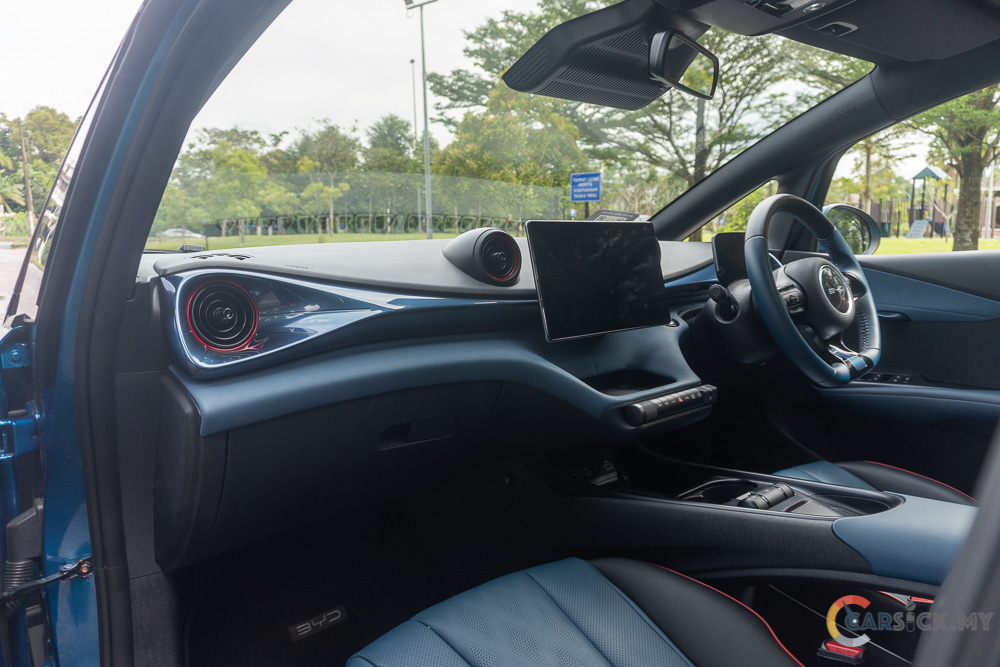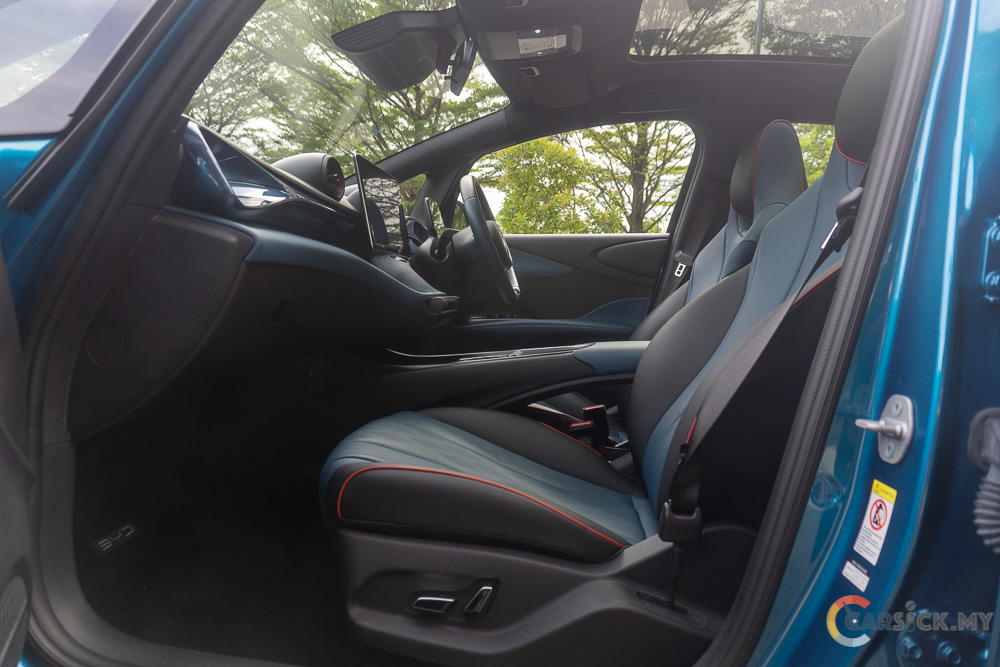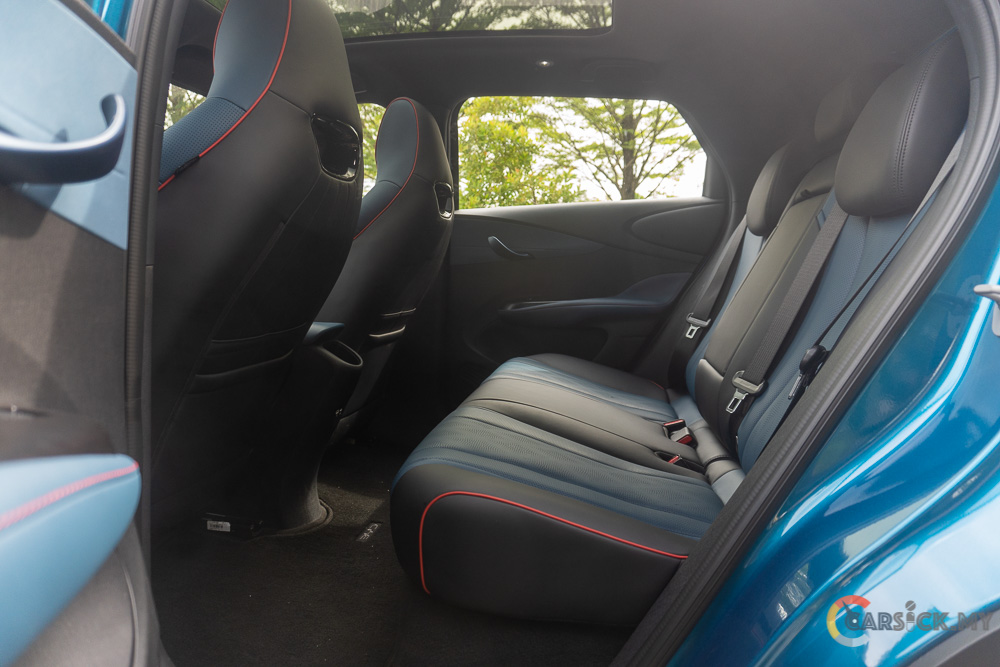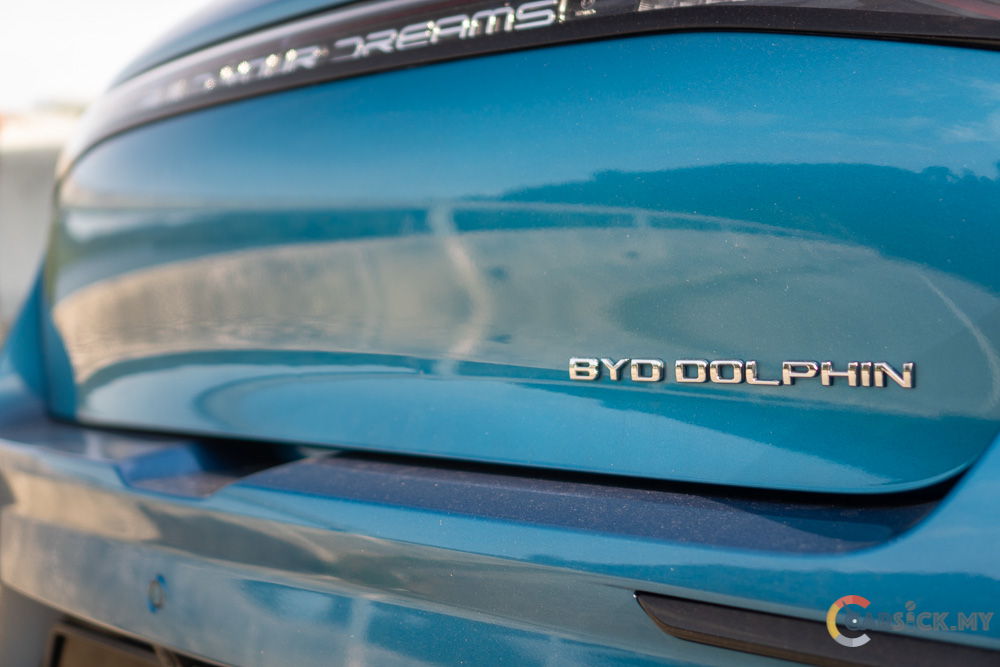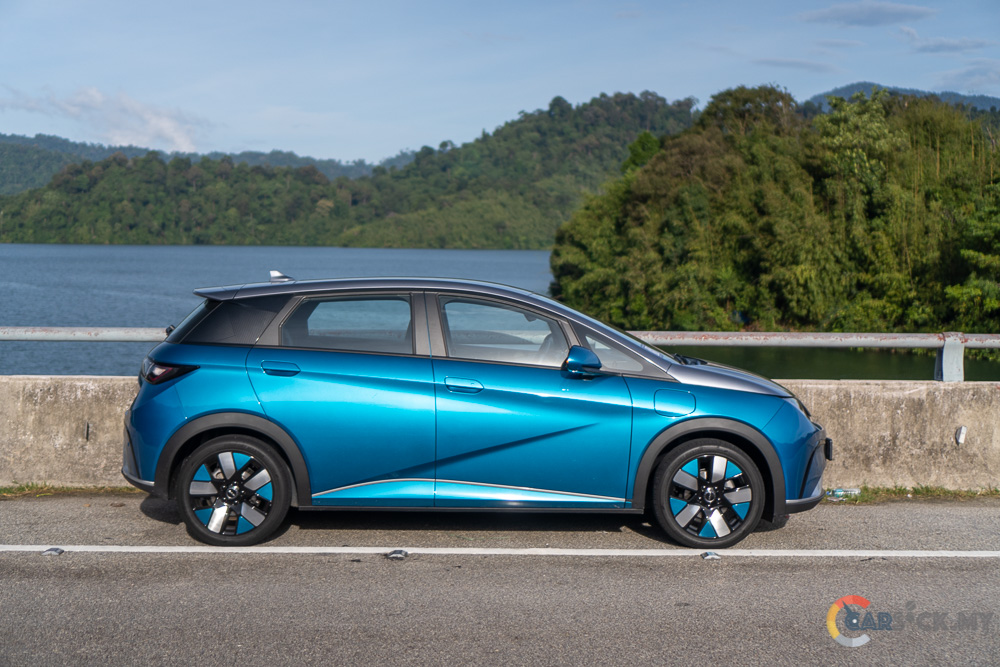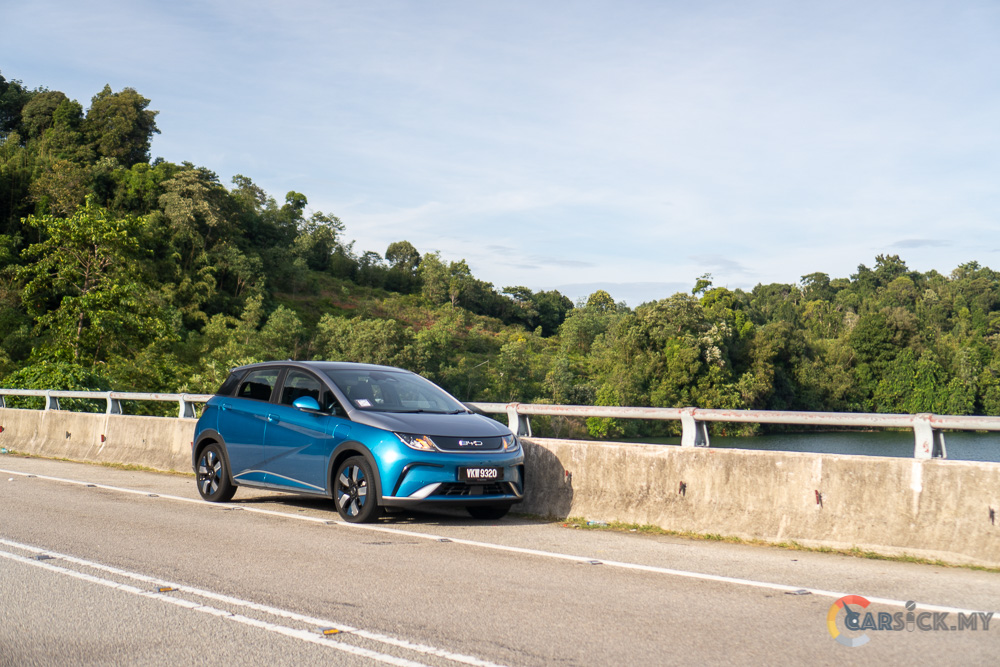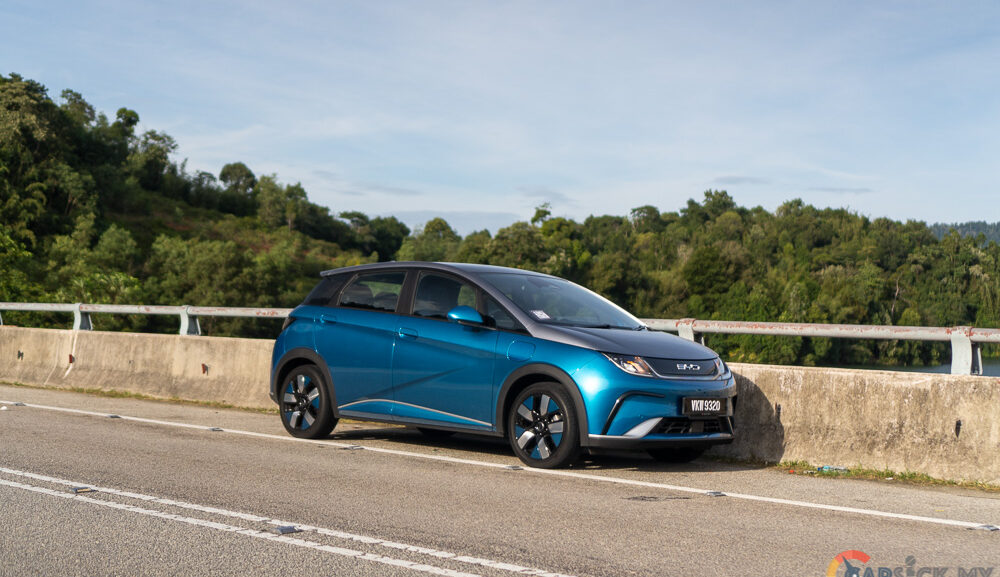After the successful launch of the BYD Atto 3, BYD Malaysia subsequently introduced an even more budget-friendly electric vehicle (EV) for the Malaysian market. This model is the BYD Dolphin, which takes over the Atto 3’s position as BYD’s cheapest vehicle in their lineup. The BYD Dolphin is set to bring EVs to more people with its attractive prices. So not too long ago, I had the opportunity to review the BYD Dolphin Extended range version. And I’ll set out to test and see if it’s worth choosing over any internal combustion vehicles.
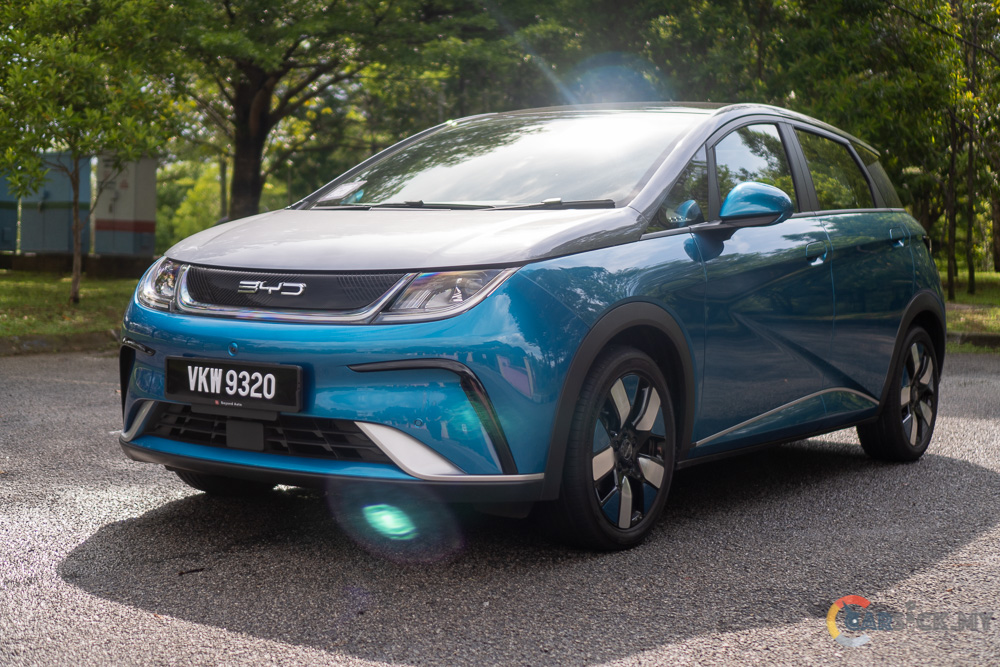
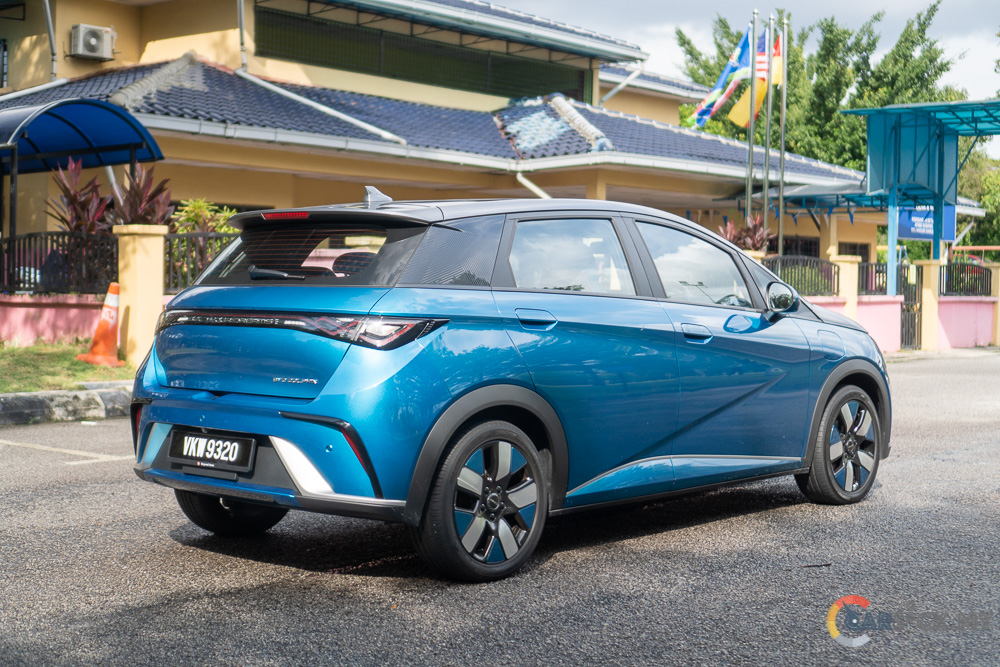 As for its exterior, I’m not a huge fan of the design. It may look funky, but it’s not to my taste. BYD did give the Dolphin a more youthful look by playing with some colors on the exterior. Buyers were not only given the option to choose a single color, but they can even opt for a dual-tone paint job straight from the factory. To give the Dolphin a modern look, BYD has equipped this vehicle with full LED headlights and taillights, which are common features on modern-day vehicles. Both the headlights and taillights are also connected with a light bar that spans both headlights and taillights. To complete the look, the Dolphin comes with a set of 17-inch rims. These rims are wrapped in 205/50 R17 tires and come with body-colored rim covers, adding to the vehicle’s style points.
As for its exterior, I’m not a huge fan of the design. It may look funky, but it’s not to my taste. BYD did give the Dolphin a more youthful look by playing with some colors on the exterior. Buyers were not only given the option to choose a single color, but they can even opt for a dual-tone paint job straight from the factory. To give the Dolphin a modern look, BYD has equipped this vehicle with full LED headlights and taillights, which are common features on modern-day vehicles. Both the headlights and taillights are also connected with a light bar that spans both headlights and taillights. To complete the look, the Dolphin comes with a set of 17-inch rims. These rims are wrapped in 205/50 R17 tires and come with body-colored rim covers, adding to the vehicle’s style points. 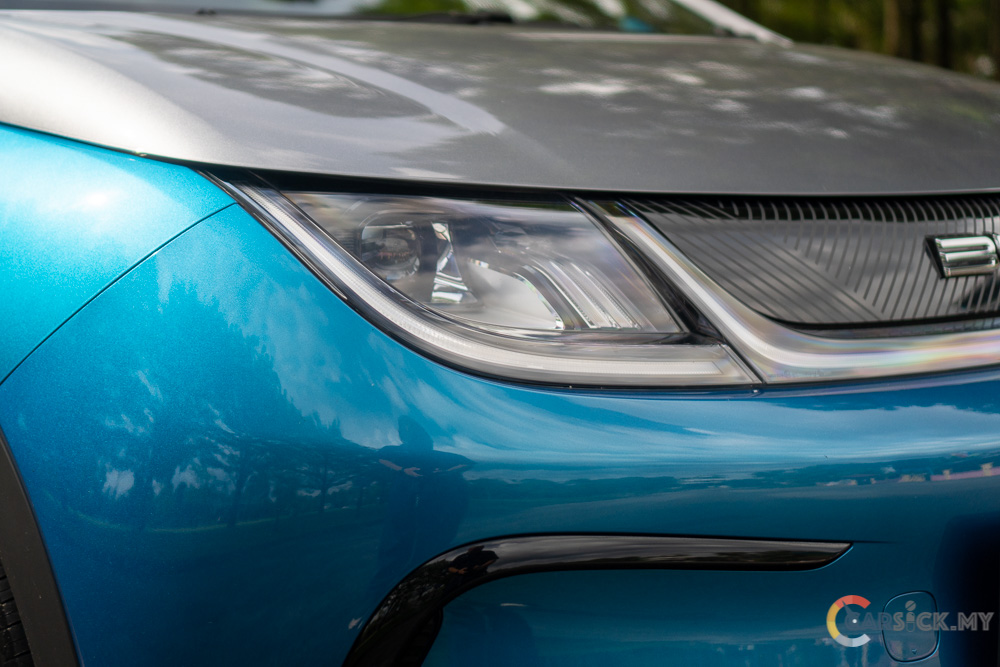
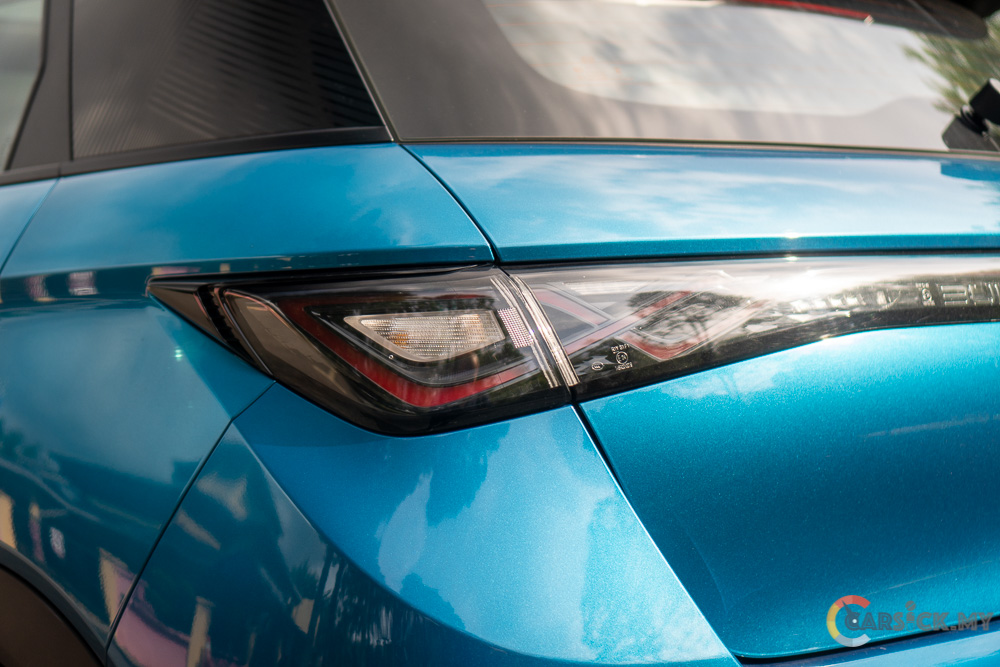
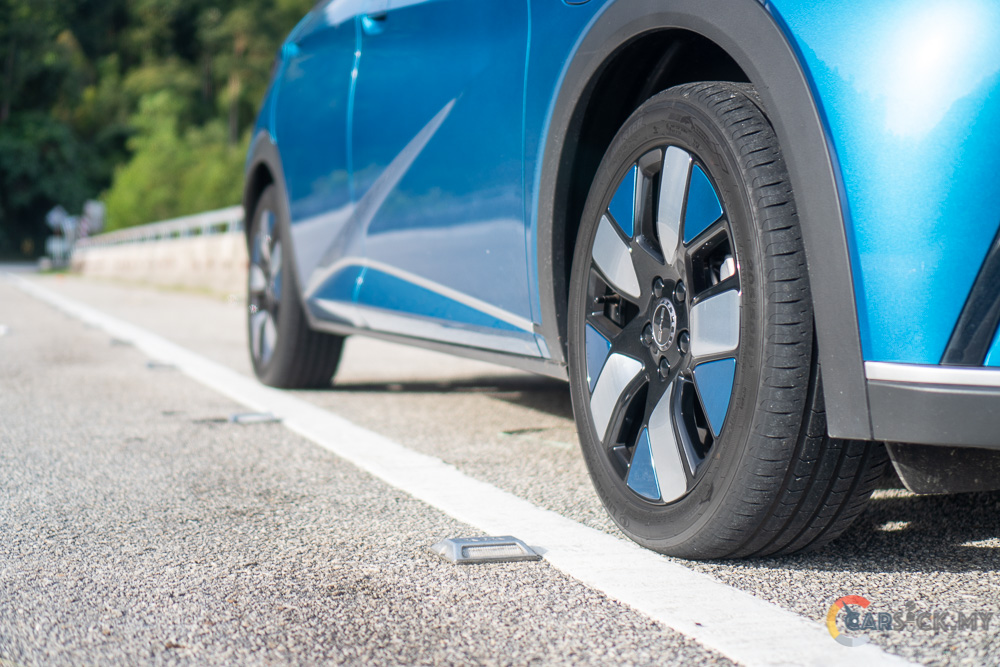
The body color also extends into the vehicle, where the Dolphin comes with a large trim that matches the body color and sits proudly on the dashboard. Apart from that, you can also spot some red highlights on the AC vents and the seats. I think BYD tries to give the Dolphin a slightly sportier ambiance inside the vehicle. While being inside the Dolphin, it gives me the same vibe that I got when I was driving the Atto 3. I’m not really a fan of it, as the design does not suit my taste for car interiors.
Just like the Atto 3, the dashboard of the Dolphin is dominated by the large 12.8-inch rotatable screen at the center. At the time of the review, BYD has not updated the infotainment system with Android Auto, but for Apple users, Carplay is available. However, looking at the recently launched Seal, I believe BYD will be updating the software for existing users soon. Coming back to the screen, it is fairly high definition and easy to read. But due to all the settings being cramped into the screen, navigating it requires some getting used to.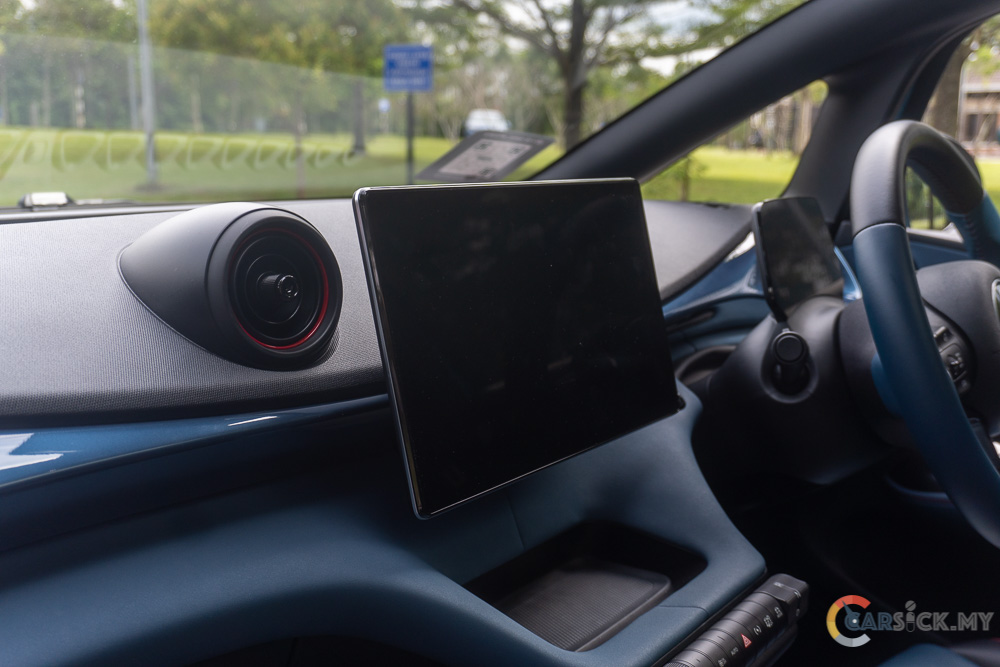
In such a small car, a 360-degree camera may not be a must, but it’s nice to have. The Dolphin does have a 360-degree camera, and the picture quality is quite good. But the viewing angle is a little weird. I think BYD engineers could spend a little more time adjusting the angles displayed on the infotainment screen. Additionally, when the reverse camera is switched on, I noticed that the view is opposite from the outside of the vehicle. But I think BYD can also correct this with some software updates. 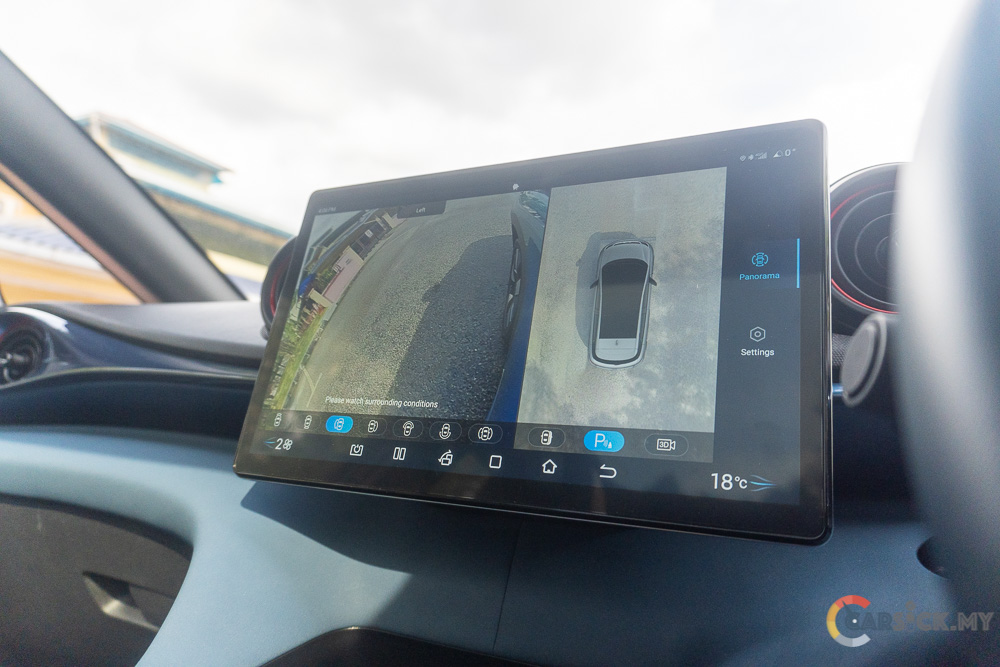
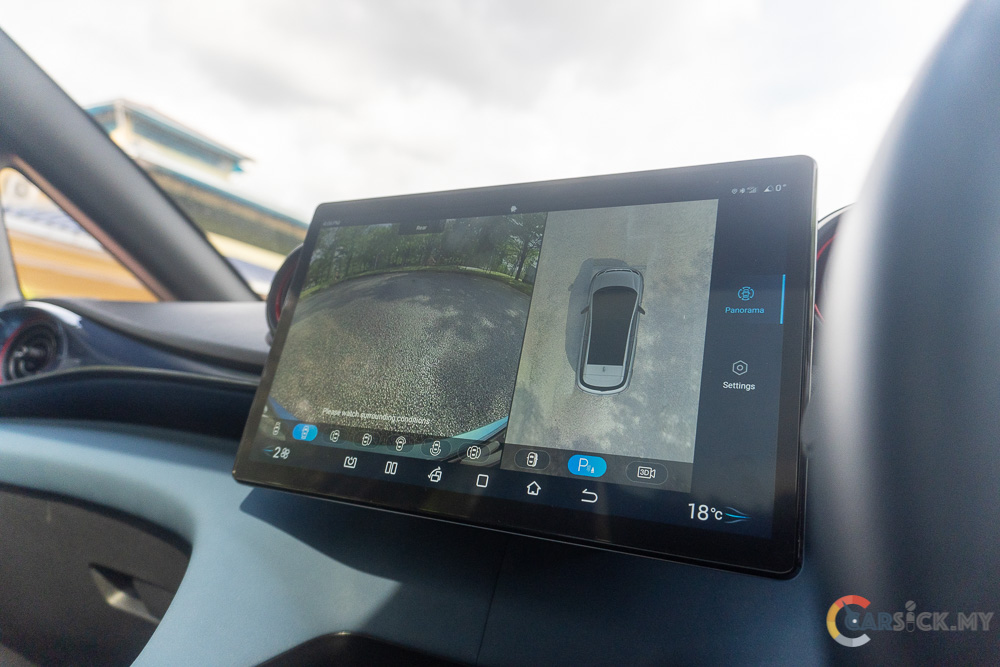
Returning to the instrument cluster, it uses the same 5-inch screen that is similar to the one found on the Atto 3. And similar to the Atto 3, this screen is on the smaller side, and it actually looks quite busy as much of the information has been cramped into it. To keep you and your passengers’ devices charged up, there are multiple USB charging slots located around the vehicle. Based on my observation, I counted 2 USB-A slots, 2 USB-C slots, 1 12V socket, and last but not least, 1 wireless charger.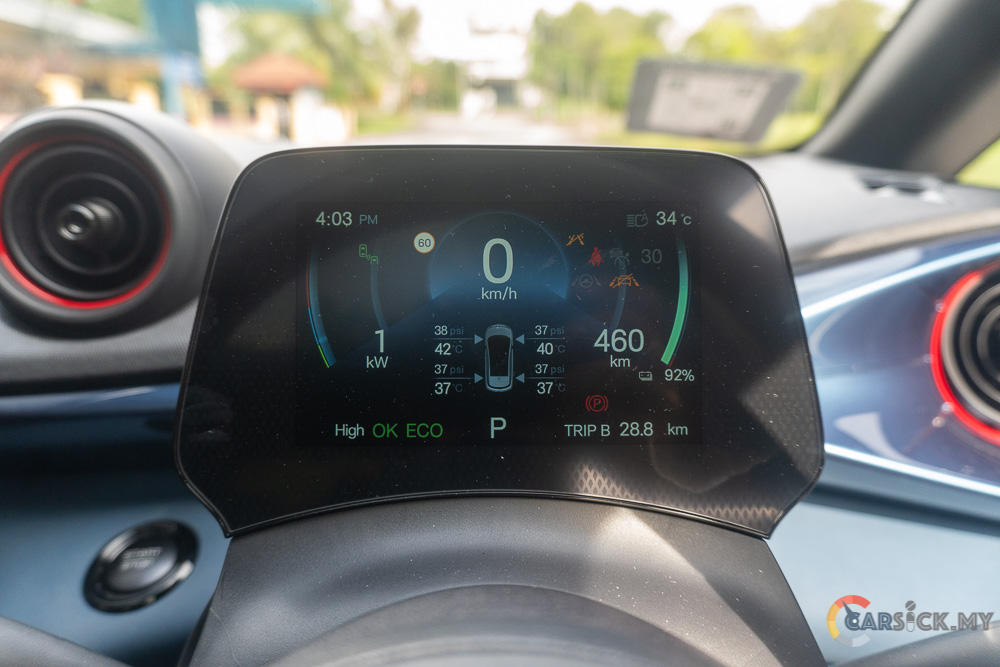
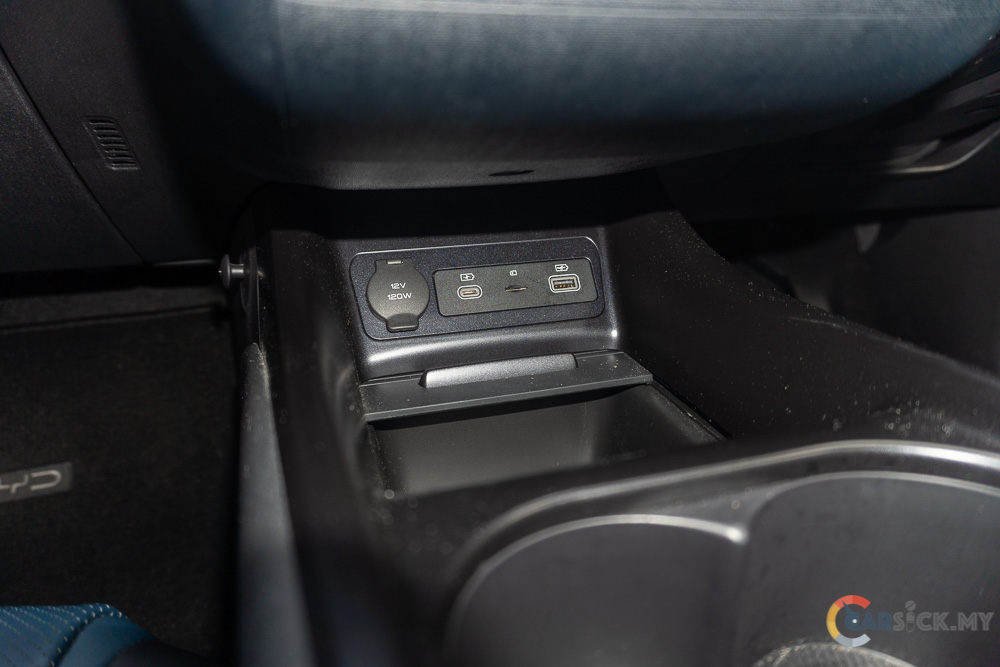


Moving on to the driver’s seat, I have to give it to BYD as they made the seat very comfortable to sit in. The cushion is soft, and the side bolster does a good job of holding you in place. The only thing that I didn’t like is that I can’t sit low enough to feel cocooned. But other than that, the driver’s seat is quite a decent place to be in. And moving to the back, it comes with comfortable 2nd-row seats. Rear passengers get a good amount of legroom and headroom to feel comfortable, and there’s no center tunnel to eat into the center passengers’ legroom space. The reclining angle of the back seat is good as well, and it’s definitely a comfortable space for people sitting back there. 
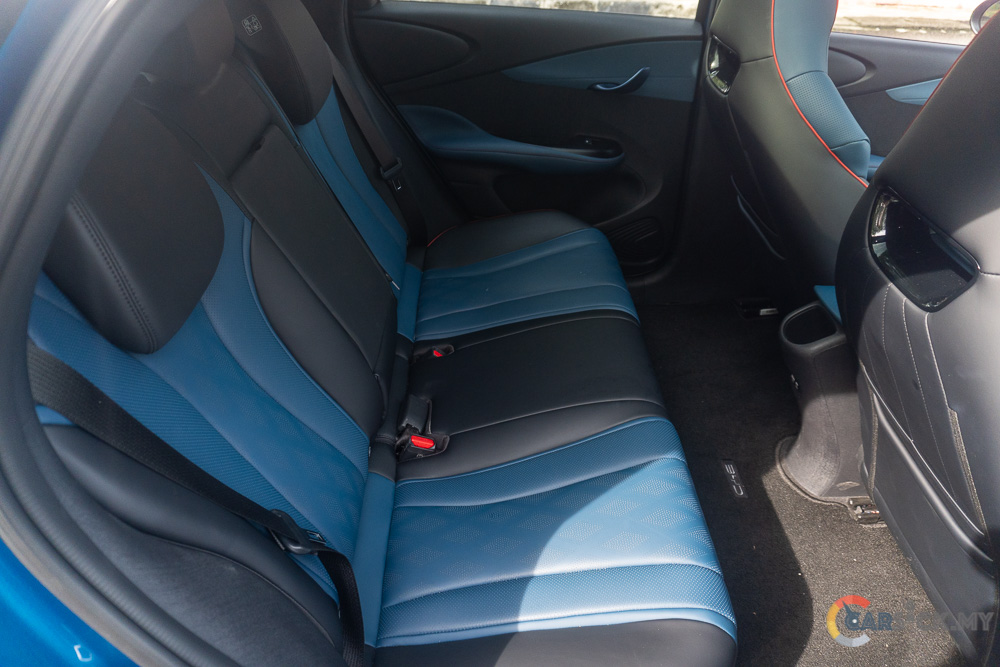
While this variant comes with a darker interior color, it is brightened up by a large panoramic glass roof. It’s not considered a sunroof, as it can’t be opened at all. And even with all the seats up, the Dolphin does come with a decently sized boot. The boot measures in at 345L, and considering the size of the vehicle, it’s sufficient. On top of that, folding down the rear seats surely grants you that extra storage area to carry longer or bulkier items. Being one of the cheapest EVs on the market, the lack of a powered tailgate is pretty much expected. 


In order to keep the vehicle affordable, the Dolphin only comes with a single electric motor, located at the front of the vehicle, which powers the front wheels. For the top-of-the-range variant, it comes with a decently sized battery with a 60.5 kWh capacity, which translates to an estimated range of 490 km based on NEDC rating. The single electric motor has the ability to produce 201 hp and 310 Nm of torque. The BYD Dolphin can accelerate from 0-100 km/h in just 7.0 seconds, but BYD did not state the top speed for the Dolphin.
To get this vehicle moving, you have to shift gears through a rather unusual toggle. It’s located in quite a hard to spot location, especially when you step into the Dolphin for the first time. When it’s on the move, the instant torque propels the vehicle with ease. But with only one motor setup, the acceleration may not be as brutal as those EVs with two electric motors. Then again, you do get up to speed in a fairly brisk manner, and the instant torque allows the car to react to throttle inputs instantly.
When you’re on a full charge, the instrument cluster shows a rather optimistic 509 km. But in reality, I would estimate the exact range to be close to 450 km if you drive the vehicle in an eco-friendly manner. As for charging, the factory stated a maximum charging speed of 80kW. But during my time with the car, the fastest charging speed I noticed was about 59kW on a 200kW charger. While it may not be the fastest charging vehicle out there, I think this charging speed is acceptable for the price point of this vehicle.
Just like the Atto 3, the Dolphin sits on a set of rather soft suspension. However, it is not as soft as the Atto 3 to the point where it makes the vehicle feel like it’s disconnected from the road. Another thing I noticed about the Dolphin is that the rebound on the suspension is on the slower side, which may cause the vehicle to hop over uneven roads, especially when going over uneven roads while turning. Usually, it’s the rear that might hop over uneven roads, but this happens at the front wheels of the Dolphin. This can catch the driver off guard if they’re not used to this vehicle.
Regarding the steering wheel, it does come with some weight to it, providing decent feedback to the driver. I find that the steering is rather precise, giving the driver a sense of confidence when tackling corners. The only downside to the Dolphin’s handling is the tires themselves. I can feel that the tire limits aren’t as high as some more branded tires. So if you’re a Dolphin owner, the first thing that I suggest you change is the tires to something more grippy. This will greatly improve the car’s drivability.
Just like the Atto 3, I think the regenerative brakes on the Dolphin are not as strong as those on other EVs out there. Many times, the physical brakes have to kick in to slow the vehicle down. I guess BYD tries to make the Dolphin drive as close to an ICE vehicle as possible. Safety-wise, the BYD Dolphin comes with a full suite of driver assistance systems that are expected in a modern-day vehicle. While it may be good to have, I do not like that I have to switch off the lane centering system every time I start the vehicle. This can become unpleasant after a while. I think this can be solved with some software updates as well.
The BYD Dolphin comes standard with Anti-Lock Braking System (ABS), Electric Parking Brake System (EPB), Electronic Stability Control (ESC), Traction Control System (TCS), Electronic Brake Force Distribution (EBD), Door Open Warning (DOW), and Tire Pressure Monitoring System (TPMS). As for the driver assistance systems, the Dolphin comes with Adaptive Cruise Control (ACC), Automatic Emergency Braking System (AEB), Lane Departure Warning (LDW), Lane Keeping Support (LKS), Predictive Collision Warning (PCW), Rear Collision Warning (RCW), Blind Spot Detection (BSD), Rear Cross Traffic Alert (RCTA), Rear Cross Traffic Brake (RCTB), Lane Departure Prevention (LDP), Emergency Lane Keeping Assist (ELKA), and Lane Change Collision Warning (LCW). 
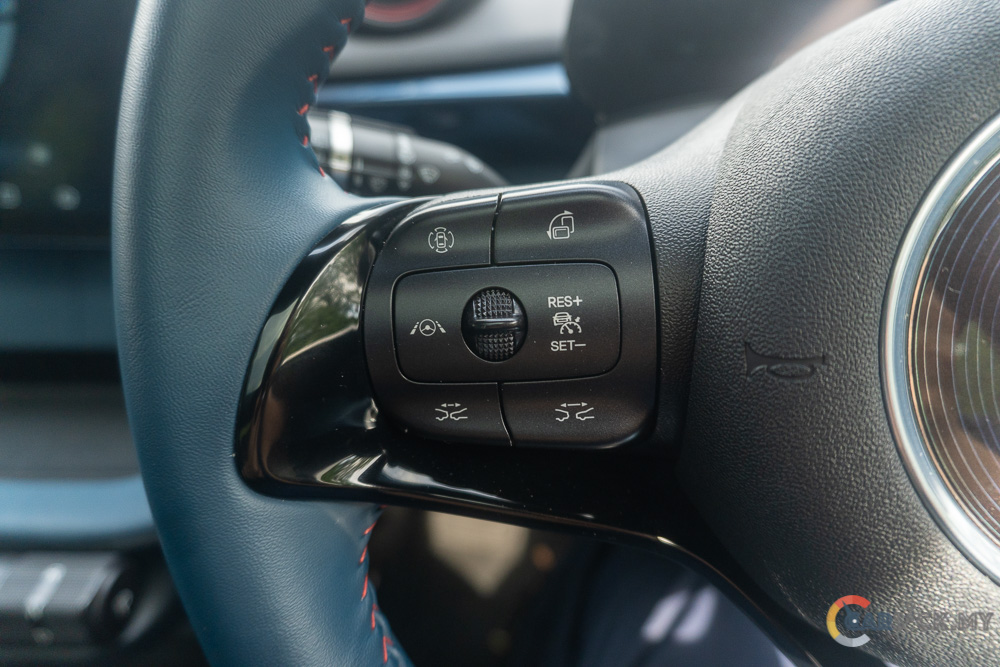
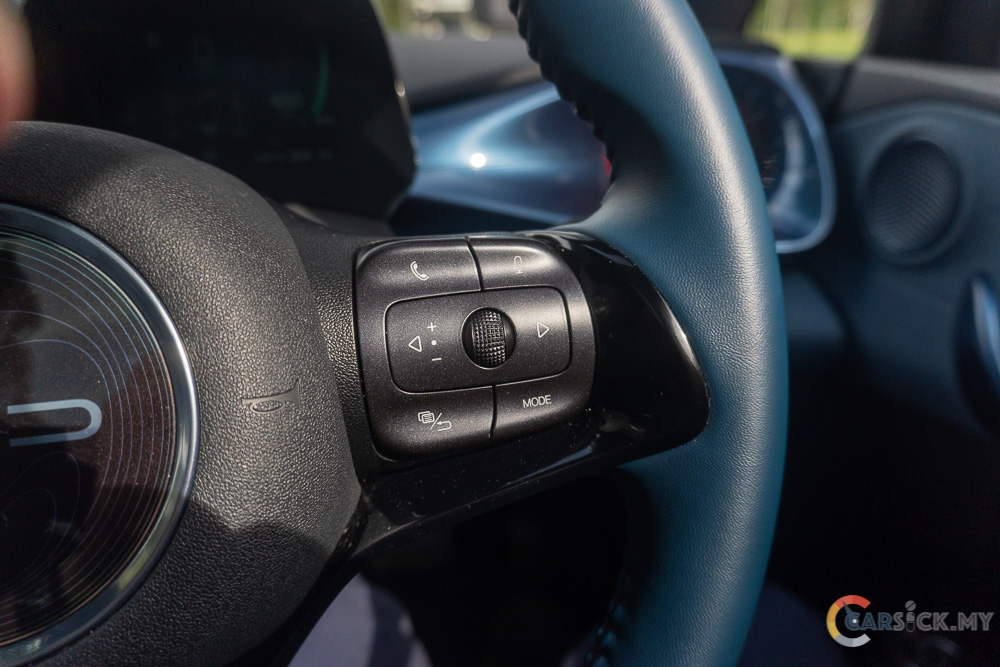
With a price tag of RM 125,530, the BYD Dolphin strikes as a good entry point for those who want to try out an EV but are not ready to invest a huge amount of money in something more expensive. It ticks all the right boxes for those looking for an EV with an affordable price tag. If you have a larger budget, of course, there are better EVs out there. But for what you pay here, there’s not much to complain about.
Check out the full photo album here. 